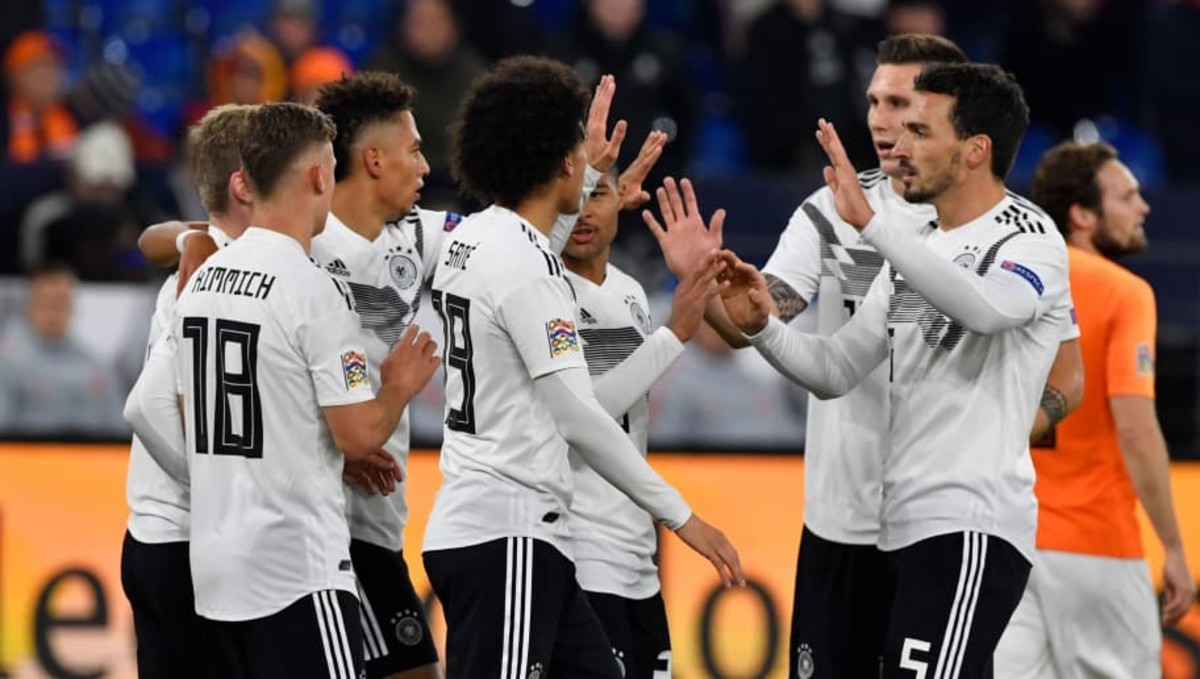How Germany Are Showing Real Signs of Recovery Despite a Terrible 2018

The World Cup in Russia represented a hammer blow to the status quo of international football.
It was the first time ever that the finalists from each of the last two World Cups, and the last two European Championships, were out before the quarter finals.
Argentina, Spain and Brazil faced exits early doors, while Italy and the Netherlands didn't even qualify. This seismic shift in the balance, even if only temporary, opened the door for the likes of Croatia, Belgium and England to shine; but not even the latter coming uncomfortably close to going all the way was as much of a shock to the system as Germany's dismal showing.
In the 2018 World Cup's 'where were you when' moment, South Korea stunned the world, and then some, scoring two stoppage time goals to run out 2-0 victors over Joachim Low's side. It left the defending champions rock bottom of the group, all matches played. A bit of you still thought they'd somehow pull it out the bag, but they didn't.
The champions' curse had struck, and tournament went on without them, with a strange sense of mourning.
The Germans went home in utter disbelief, and the tournament descended into anarchy without the sense of order and 'stay in your lane' energy they brought to proceedings. Harry Kane won the Golden Boot, and England, England, went as far as the semis.
Since then, in an attempt to get things back together, things in the German camp have been a bit chaotic. The Nations League has so far yielded a 0-0 draw and a narrow defeat to world champions France, as well as a humbling defeat to the Netherlands before rounding things off with a 2-2 draw, in which they were two to the good at half time.
Friendlies, meanwhile, have seen them squeeze past Peru 2-1 before an impressive win over Russia. All-in, they've left most unsure what to think.
In effect, it's been a feeling out process, rendering results - both positive and negative - largely irrelevant for the time being. While the Nations League, in which they will now drop to League B, offered a back door into Euro 2020, the ultimate aim for Germany will be gaining access through the qualifiers, which kick off in March.
They've treated their tough Nations League matches, and accompanying friendlies, with the air of a team trying to understand what has to change in terms of its tactics and personnel. To that end, they have learned a lot.
The recent emergence, for example, of Leroy Sane, Serge Gnabry and Thilo Kehrer on the international stage, will undoubtedly shape the face of future squads.
The electric form of the former, starting the last three and scoring twice in the process, has been a huge plus. While heartbreakingly missing out on the World Cup squad, the Manchester City winger has bounced back and taken the bull by the horns, taking charge of games and directing the flow of attacks with the air of David Silva if David Silva had pace.
Gnabry, meanwhile, has made his first five appearances in a Germany shirt, scoring four goals, and making the case for himself as the foil that Timo Werner needs to succeed as an international goalscorer.
Then there's Kehrer, the versatile PSG defender, who has himself shone as a wing-back in his early caps, giving Joshua Kimmich the license to come into midfield and offer some extra defensive dig where required.
An exciting, emerging cast of talent aside, there's undeniable proof that the Germans are learning from their mistakes. They went with a 4-3-3 against the Netherlands the first time around in October, and were brutally exposed by an impressive unit of Dutch players.
A little over a month later, and they were once again bossing it - against the same opponents, no less. A switch to five at the back, allowing the wing backs to get forward while simultaneously taking positional responsibility from the shoulders of the wide forwards - Gnabry and Sane in this instance - worked absolute wonders.
A mad last five minutes in which they went from 2-0 up to level highlighted there is a lot of work to be done - but the big thing to take away from their last match of 2018 is that there are some very promising signs.
In the first half, at least, they looked like Germany again, with an added attacking flair and freedom you maybe wouldn't classically associate with them. And they started, notably, without Marco Reus, Leon Goretzka, or Thomas Muller, to name just a few stars who were rested from the starting lineup.
It's worth noting, of course, that they were already relegated from their Nations League group before a ball was kicked against Holland, so whatever pressure they were under to get results was off.
The focus of the Nations League matches, though, was always more on finding the system, and the personnel, who worked, and they're getting much, much closer to that point. Not an encouraging thought for whoever they draw in their Euro 2020 qualifying group.
Certainly, if they can continue the rate of development they've shown since the World Cup, then they'll be a force again before too long.
How does that old saying go, about the lasting nature of class and form? Recent fortunes aside, class isn't something the German squad lacks in now, is it?










